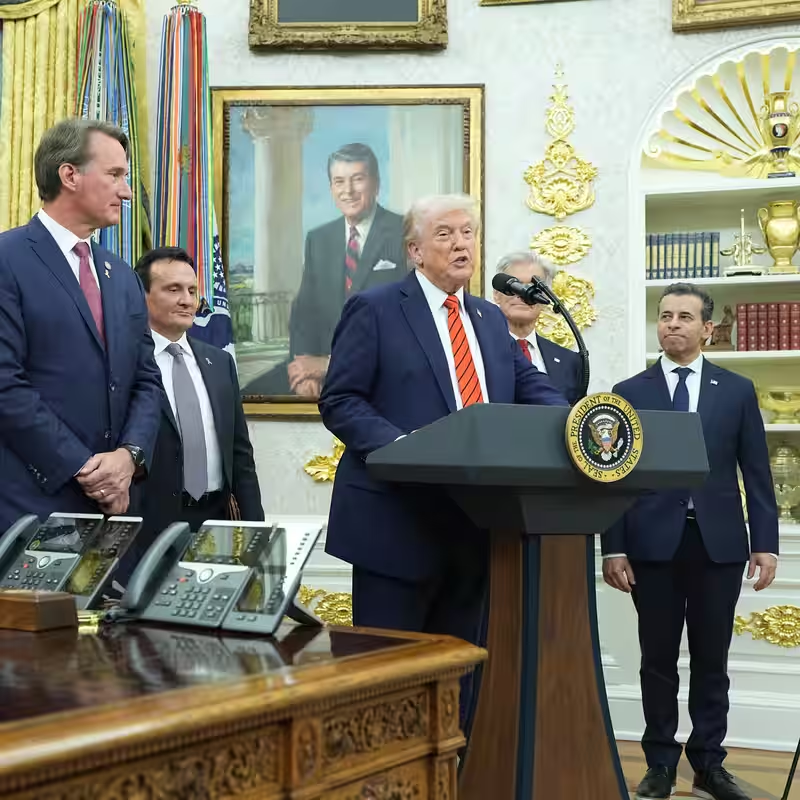In a high-stakes move that blends trade policy with public health, President Trump has secured a deal with pharmaceutical giant AstraZeneca to lower drug prices in the U.S.—a breakthrough he credits to the looming threat of steep tariffs on imported medicines.
The agreement, announced Friday in the Oval Office alongside AstraZeneca CEO Pascal Soriot, marks the second such pact this week, following a similar deal with Pfizer. But while the White House touts it as a major win for American consumers, experts caution that the real-world impact may be more limited than it appears.
How the Trump-AstraZeneca Drug Price Deal Works
Under the new arrangement, AstraZeneca will sell its drugs to Medicaid—the federal-state health program for low-income Americans—at prices comparable to what it charges in wealthy European countries. In exchange, the company receives a three-year reprieve from potential Trump administration tariffs on its overseas-manufactured drugs.
“Now, I’m not sure that Pascal would like to say—but behind the scenes, he did say, tariffs were a big reason he came here,” Trump remarked during the announcement .
What Drugs Are Affected?
The deal primarily impacts medications sold through Medicaid, which already receives federally mandated discounts. Notably, AstraZeneca has not committed to lowering prices for drugs sold to Medicare, private insurers, or employers—channels that account for the vast majority of U.S. prescription spending.
However, the company has launched a direct-to-consumer website (to be integrated into the forthcoming TrumpRx.gov portal) where uninsured patients can buy select drugs like:
- Farxiga (for diabetes, heart failure, and kidney disease)
- Airsupra (asthma inhaler)
- FluMist (nasal flu vaccine for home use)
For example, a month’s supply of Farxiga costs $182 on the site—still far more than the typical $25 co-pay for insured patients.
Drug Price Cuts: Real Relief or Political Theater?
Critics point out that Medicaid already pays some of the lowest drug prices in the U.S. due to federal law. “In many cases, the prices that Medicaid pays are already similar to those in Europe,” noted health policy experts .
Moreover, AstraZeneca’s U.S. sales to Medicaid represent only a small fraction of its overall American revenue. The bulk of its business—through Medicare and commercial insurance—remains untouched by this agreement.
Table: Key Details of the Trump-AstraZeneca Drug Pricing Deal
| Aspect | Detail |
|---|---|
| Program Affected | Medicaid only |
| Tariff Protection | 3-year exemption from U.S. tariffs on imported drugs |
| New Consumer Portal | TrumpRx.gov (launching in 2026) |
| Direct-Purchase Drugs | Farxiga, Airsupra, FluMist (more to come) |
| Impact on Medicare/Insurers | No price reductions committed |
| U.S. Manufacturing Commitment | $50 billion investment over 5 years; new Virginia plant |
Why Tariffs Were the Leverage
The Trump administration has threatened tariffs of up to 15% on EU drugs and 100% on drugs from other regions. Though the October 1 deadline was delayed, the pressure worked: AstraZeneca and Pfizer both moved quickly to negotiate.
Health Secretary Robert F. Kennedy Jr. and CMS Administrator Dr. Mehmet Oz framed the approach as a “voluntary” alternative to Biden-era Medicare price negotiations—which the industry fiercely opposed in court (and lost).
“All these are opportunities for us to re-envision the way the government normally works… by leapfrogging litigation,” said Dr. Oz .
What’s Next for U.S. Drug Prices?
More deals may be on the horizon. Officials hinted that additional pharmaceutical companies are in active talks with the White House. Meanwhile, two federal notices suggest the administration may still pursue formal regulations that tie U.S. drug prices to international benchmarks.
For now, the AstraZeneca agreement is a symbolic—and partially practical—step in Trump’s broader campaign to rein in prescription costs. Whether it delivers meaningful savings for most Americans, however, remains an open question.




